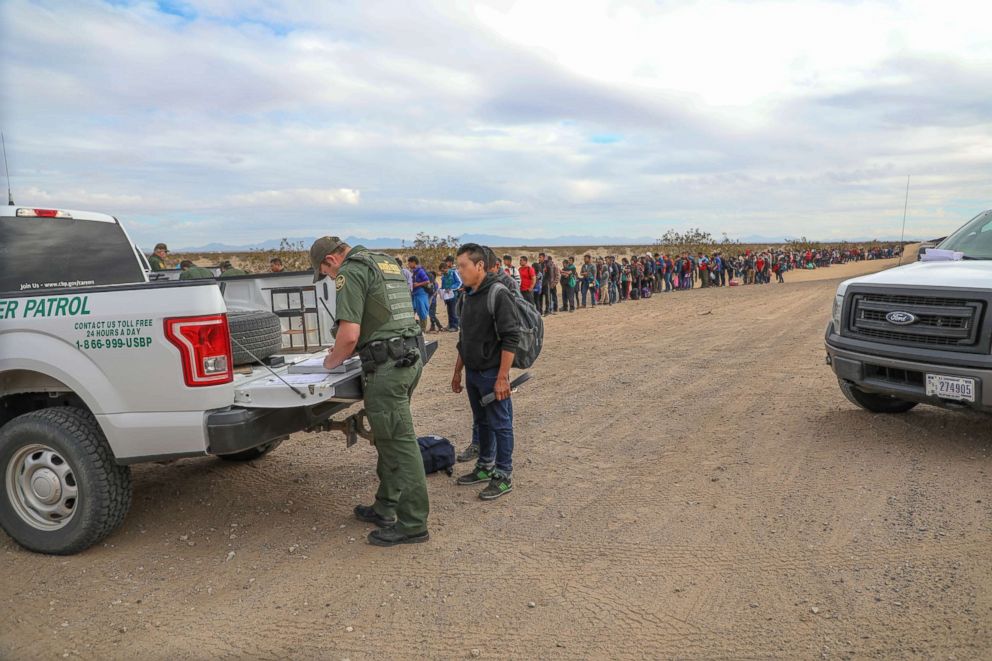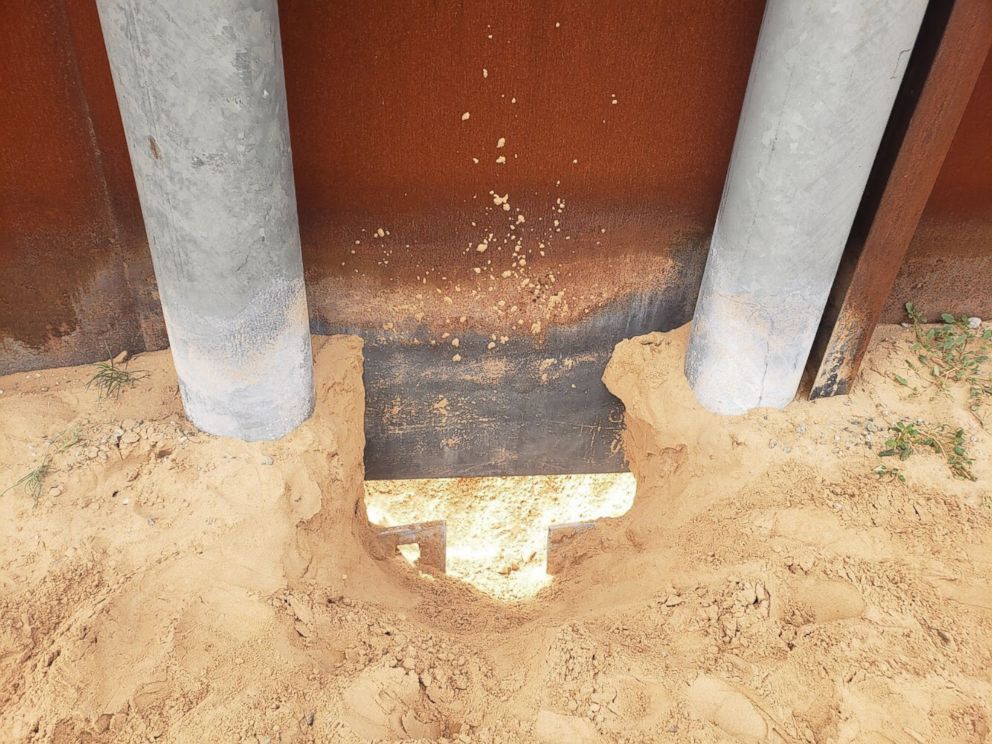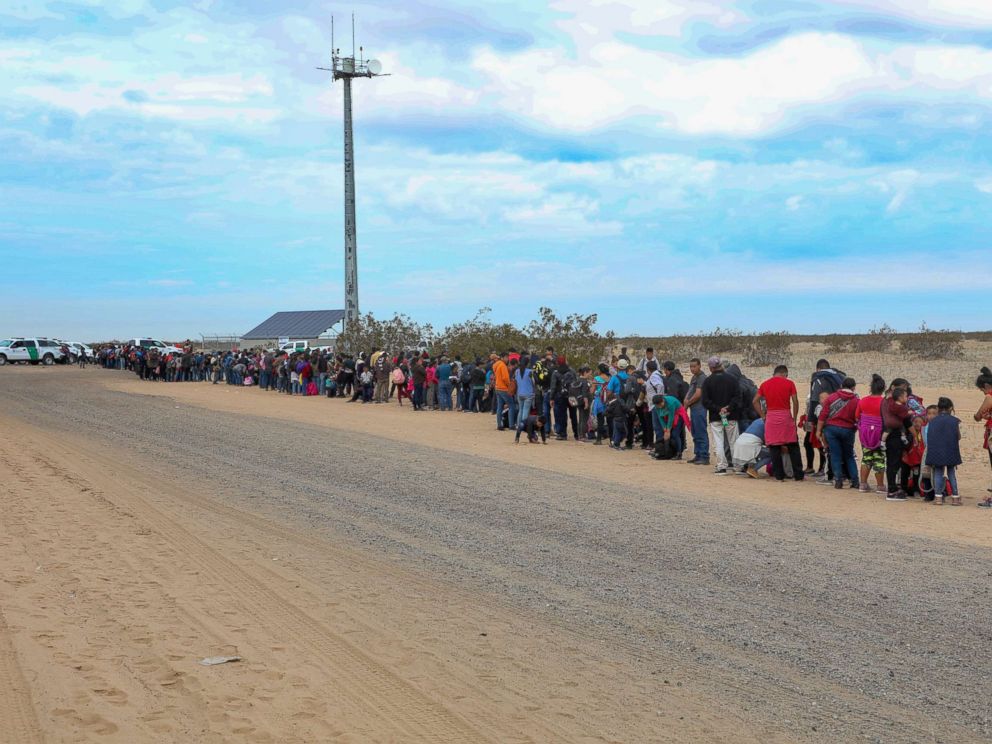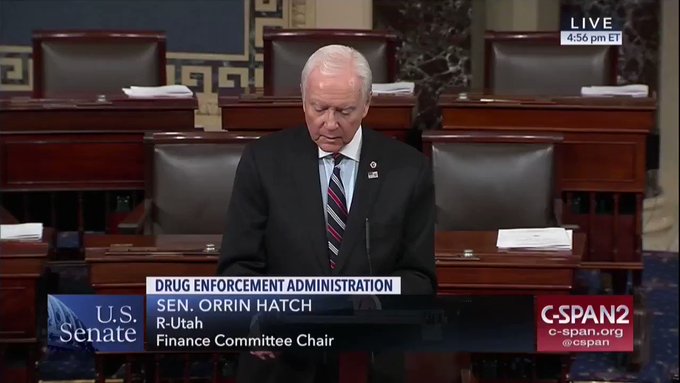Rep. Tom Marino, R-Pa., has withdrawn his name from consideration as America's drug czar, President Trump said Tuesday. Marino is stepping back days after reports that legislation he sponsored hindered the Drug Enforcement Administration in its fight against the U.S. opioid crisis.
A joint report by The Washington Post and 60 Minutes found that Marino's measure "helped pump more painkillers into parts of the country that were already in the middle of the opioid crisis," as NPR's Kelly McEvers said earlier this week. The bill had been opposed by the DEA and embraced by companies in the drug industry.
As NPR's White House Correspondent Tamara Keith notes, Marino's withdrawal leaves the Trump administration without nominees for several important domestic roles, including drug czar, the director of the DEA, and secretary of Health and Human Services.
Marino was a main backer of the Ensuring Patient Access and Effective Drug Enforcement Act; among other things, the measure changed the standard for identifying dangers to local communities, from "imminent" threats to "immediate" threats. That change cramped the DEA's authority to go after drug companies that didn't report suspicious — and often very large — orders for narcotics.
After the Post and 60 Minutes report, several members of Congress called for the White House to pull Marino's nomination as drug czar.
Sen. Joe Manchin, D-W.Va., said he was "horrified" by the story, adding that he "cannot believe the last administration did not sound the alarm on how harmful that bill would be for our efforts to effectively fight the opioid epidemic."
In a letter to the president, Manchin wrote about the ability of wholesale drug distributors to send millions of pills into small communities:
"As the report notes, one such company shipped 20 million doses of oxycodone and hydrocodone to pharmacies in West Virginia between 2007 and 2012. This included 11 million doses in one small county with only 25,000 people in the southern part of the state: Mingo County. As the number of pills in my state increased, so did the death toll in our communities, including Mingo County."
After Marino's name was withdrawn, Manchin tweeted to Trump, "thanks for recognizing we need a drug czar who has seen the devastating effects of the problem."
Manchin has co-sponsored legislation that would repeal the changesmade by the 2016 law, along with Sen. Claire McCaskill, D-Mo., and Sen. Margaret Wood Hassan, D-N.H.
In the Senate, the drug enforcement bill was sponsored by Sen. Orrin Hatch, R-Utah — who also saw it through the markup process. In Congress and on Twitter, Hatch has defended his role this week, calling the Post story "flawed" and "one-sided."
Hatch also said the bill was supported by patient groups who "were concerned about DEA's unfettered enforcement authority."
"I spent months negotiating with DEA and with DOJ until they were at a point where they were comfortable allowing the bill to proceed," Hatch said Monday on Capitol Hill. "If they had asked me to hold the bill or to continue negotiations, I would have done so."
Hatch noted via Twitter that "President Obama signed this bill into law. DEA and DOJ, who work for the President, could have urged him to veto it. They did not."
Tens of thousands of Americans are dying from drug overdoses each year. In its preliminary report about the opioid crisis, President Trump's Commission on Combating Drug Addiction and the Opioid Crisis said in August that "with approximately 142 Americans dying every day, America is enduring a death toll equal to Sept. 11 every three weeks."
In an interview with NPR, here's how Post reporter Scott Higham described the way in which Marino's bill became law:
The president had nominated Marino to lead the White House Office of National Drug Control Policy. In his tweet announcing Marino's decision to withdraw Tuesday morning, Trump added, "Tom is a fine man and a great Congressman!"
The opioid story was revealed by whistleblower Joe Rannazzisi, a former high-ranking DEA official, who told 60 Minutes, "This is an industry that allowed millions and millions of drugs to go into bad pharmacies and doctors' offices, that distributed them out to people who had no legitimate need for those drugs."
Rannazzisi said he was in "total disbelief" when the White House announced that Trump had chosen to nominate Marino, adding, "The bill was bad. Him being the drug czar is a lot worse."
https://www.npr.org/sections/thetwo-way/2017/10/17/558276546/tom-marino-trumps-pick-as-drug-czar-withdraws-after-damaging-opioid-report?fbclid=IwAR3SMA4h0X1GdW6oWuQDSwC3nYrLl1I-2aMnWeVDcDzm5OvtY-3BluPlSmoVIDEO ON LINK
a link.
The largest single group of asylum seekers ever to cross into the U.S. tunneled beneath the border wall near San Luis, Arizona, on Monday, voluntarily turning themselves into Customs and Border Protection, according to the agency.
Migrants can be seen marching toward Border Patrol agents by the hundreds, according to video obtained by ABC News. Smugglers dug a series of seven holes, only a few feet long beneath the steel border fence, with hundreds going beneath the wall and a smaller number clambering over it, according to CBP.
The fresh sand and scuff marks of shoes on the rusty steel were still there when ABC News visited the site on Thursday.
 Yuma Sector Border Patrol
Yuma Sector Border Patrol
The agency says 179 of the record 376 people who crossed were children, including over 30 unaccompanied minors -- children under 18 traveling on their own.
The overall number of unauthorized crossings has plummeted since its peak in the 2001, when CBP logged about 1.6 million apprehensions, according to government statistics. However, the demography of those crossing has changed dramatically.
Parents with children now comprise over 80 percent of the total apprehensions of those crossing the 2,000-mile long border with Mexico. The vast majority of them, like the group near Yuma Monday, surrender immediately or seek out Border Patrol agents in order to begin the asylum process.
CBP Yuma Border Sector Chief Anthony Porvaznik said his unit needs better border barriers, but more urgently it needs funding to provide for these families.
"That's our No. 1 challenge that we have here in the Yuma sector, is the humanitarian problem," Porvaznik said. "As I mentioned, 87 percent of the apprehensions here are family units and unaccompanied alien children."
 Yuma Sector Border Patrol
Yuma Sector Border Patrol
The mass crossing this week took place in a sparsely populated stretch of the border -- where an old model of border barrier rises about 12 feet from the sandy ground. The stretched agency only had three agents patrolling that 26-mile-long section of the border.
It took hours to process the families, most of which were sent to the area’s chronically overcrowded central processing center in Yuma.
"In my 30 years with the Border Patrol, I have not been part of arresting a group of 376 people," Porvaznik said. "That's really unheard of."
On Thursday, hundreds of asylum seekers were being held in cinderblock cells with thick glass windows that overlooked a central bullpen where CBP agents worked to process them and provide humanitarian needs. The asylum seekers were separated into cells: fathers with sons, fathers with daughters, unaccompanied minors and mothers with children.
As in all such facilities, the CBP said it works to process them as quickly as possible, and provides basic medical care. Still, detainees eat, sleep and use the bathroom in the same room. Scraps of food mingled with silvery space blankets on the floor. In one cell, several boys had balled up the blankets into a makeshift soccer ball they were kicking around.
 Yuma Sector Border Patrol
Yuma Sector Border Patrol
One man in the group said he left Guatemala eight days ago and made most of the trip by bus along with his 12-year-old daughter. They were planning to leave the processing center destined for San Diego -- plane ticket in hand.
The father said he saved about $5,000 to pay a coyote to quickly get them to the border. He left a wife and two younger daughters back in Guatemala. Next to them were a mother and two daughters on their way to Cincinnati, also from Guatemala. They too traveled by bus and the journey took about eight days.
Just two days after the group tunneled under the border wall in Yuma, the Border Patrol took in another huge group of migrants in New Mexico. The 247-person group, including unaccompanied minors, crossed near the Antelope Wells Port of Entry and immediately surrendered to authorities for processing.
The CBP said 24 large groups -- quantified as 100 or more -- have crossed the border near Lordsburg, New Mexico, just since Oct. 1, 2018.
ABC News' Ignacio Torres and Mark Osborne contributed to this report.
Editor's note: This story has been updated to say Customs and Border Protection.
https://abcnews.go.com/US/largest-single-group-migrants-tunnels-border-wall-arizona/story?id=60462672&fbclid=IwAR34TdrEc-qmOIoi2MH_dSG2wiXaMC-8s4pwIJDUn9FBqRyHZ02TrFzpPgo
I give you the republican Russian assets who have publicly outed themselves. Please show them a little love on social media. These people think that it's more important to insure that Oleg Deripaska gets his money, than that 800,000 furloughed federal workers get their paychecks.







No comments:
Post a Comment